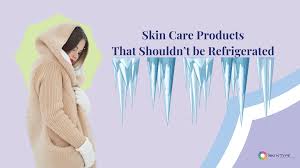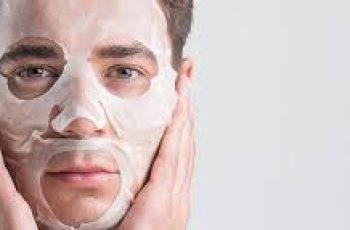
Which Skincare Products Should Not Be Refrigerated?
As a dermatologist, one of the most common questions I receive is whether certain skincare products should be stored in the refrigerator. This question came up a lot in my dermatology practice when skin care refrigerators became an trend. It also comes up in winter when my patients are travelling to cold areas and are wondering abut leaving skin care products and sunscreens in their cars. (I’m in Miami so we do not have this issue in Miami- but skin care refrigerators are popular here)
While the cold can help extend the shelf life of some ingredients like vitamin C and retinol, not all products react well to lowered temperatures. In fact, chilling the wrong formulas can actually thicken textures or cause ingredients to destabilize and lose potency faster.
So which skincare products should not be refrigerated ? Basically creams and oils should not but I will also discuss which ingredients do not like the cold.
Are you stocking up on skincare because you found a good sale and want to know how to extend the expiration dates on the skincare products? Refrigerating them to make them last longer might be an option.
How to Store Skincare Products
Which skincare products should not be refrigerated, which should be refrigerated, which can be frozen, and which should be stored at room temperature?
When it comes to getting the most shelf life out of your serums, moisturizers, and other skincare products, storage conditions make all the difference. However, recommendations really depend on the types of ingredients formulated into each product. What works for an antioxidant-packed serum may damage a ceramide-based cream. So let’s cover some overall guidelines.
First and foremost, always check the product packaging. Most makeup brands brands clearly state a specific temperature range and storage advice tailored to that exact formula, but skincare products’ may not have this advice.. If no guidance is given, then use room temperature conditions as a default. But for specifics on whether refrigeration may help or hurt, you need to consider the ingredient categories present. Certain active ingredients like vitamin C and retinoids benefit tremendously from chilling to counter natural breakdown from heat and light exposure over time. Meanwhile, lipids like oils and fatty alcohols suffer under cold temps, undergoing texture-wrecking solidification and separation. Coming up, we’ll explore different ingredient reactions in greater depth so you know exactly where to keep each of your precious skincare potions.
Refrigerator temperature
The most common temperature settings for a refrigerator are typically between 35 to 38 degrees Fahrenheit. If you make it warmer you usually cannot get warmer than 40 degrees. This is too cold for many skincare products.
Freezer temperature
The temperature range for a home freezer typically falls within the range of -10 to 0 degrees Fahrenheit (-23 to -18 degrees Celsius).
You do not want to store any skincare products in the freezer because these low temperatures cause:
Texture Changes: The moisturizer can become very thick and may freeze at the lower end of this temperature range, making it difficult to apply. When frozen, it may lose its smooth texture, which can affect its usability.
Separation: Some skincare products contain various ingredients that can separate or become unevenly distributed when exposed to extreme cold temperatures. This can result in an uneven application or a change in the product’s consistency.
Altered Efficacy: Extreme cold can potentially affect the efficacy of certain active ingredients in the moisturizer. Some ingredients may become less effective or lose their potency when subjected to very low temperatures.
Packaging Issues: The container or packaging of the moisturizer may also be affected by extreme cold. For example, plastic bottles or tubes could become brittle and crack, potentially leading to leaks or contamination.
should you refrigerate skin care products
Skincare Products Should Not Be Refrigerated?
These skincare products should never be refrigerated:
Exosome serums
Growth factor serums
Peptide serums
Extreme cold temperatures can potentially affect the stability and efficacy of growth factors and peptides in skincare products, including skin serums. However, the degree to which they may be affected depends on various factors, including the specific ingredients, formulation, and packaging of the product.
These can be refrigerated but the texture may get thick or they may separate- especially at very low temperatures:
Body Creams
Face Creams
Lotions
Moisturizers
Ointments
These products are good to keep in the refrigerator but should be warmed to room temperature before application:
Toners
Retinol Serums (that don’t have peptides)
Vitamin C Serums
How to Store Creams, Lotions and Oils
When it comes to proper storage methods for skincare creams, lotions, and oils, refrigeration is rarely the optimal long term choice due to potential texture changes. Most emulsified products contain a delicate balance of oil and water stabilized by emulsifiers and thickeners that can be disrupted by cold temperatures. For example, chilling oil-in-water emulsions causes thicker, difficult-to-spread consistency while water-in-oil creams risk destabilization and separation. Refrigerating oils also prompts solidification of botanical triglycerides and lipids. For optimal shelf life with smooth finely-tuned formulas, controlled room temperature between 15-25°C away from heat and light is best. The exception would be select water-based lotions with adequate preservatives that may fare better chilled to prevent microbial issues.
Organic skincare is often preservative-free. If you are not going to use them for 3 months, it is a good idea to store them in the fridge. (However, it is a better idea not to stock up on organic skincare and buy it fresh when ready to use it.) Organic skincare should not be stored in the fridge long-term, however temporarily chilling them can minimize overgrowth of potential fungal, yeast and bacterial contaminants. Expect possible texture changes after removing them from the cold.
can you refrigerate ceramides?
Ceramides, Fatty Acids, and Lipids in Moisturizers
Ingredients like ceramides, plant oils, cholesterol, squalane, and fatty acids (saturated or unsaturated) are very prone to solidifying, crystallizing, and totally breaking down in texture when refrigerated. The microscopic lipid molecules do not do well in cold. These fats undergo physical changes that compromise their performance and integrity within skincare formulas. Lipids owe these negative reactions to their molecular structure and properties.
You see, lipids consist primarily of non-polar, hydrophobic carbon chains. These oily chains want to avoid water at all costs.
At higher temperatures, all the kinetic energy keeps these hydrophobic chains happily mobile and sliding past one another with relative ease. However, chilled temperatures sap that energy, causing the lipid chains to slow down, stack up, and literally solidify or crystalize. This makes them impossible to smoothly incorporate into water-based products like serums and emulsions. Instead, they clump up, harden, and mess with textures. In some cases, they can even fall out of solution entirely and you see separation of the cream or lotion.
I always recommend storing any heavy moisturizers with fats and oils at room temperature in a cool dark room like a closet. The bathroom is the worst place to store them because it is often warm and humid. You do not want these heavy face moisturizers to be too hot or too cold.
Ceramides
Ceramides are waxy, lipid molecules that help reinforce the skin’s moisture barrier. They may be plant-derived or synthetically formulated. When exposed to cold temperatures, ceramides thicken substantially, which can throw off the texture of creams and serums. They may also crystalize and fall out of solution.
Fatty Acids
Fatty acids are found in moisturizers. Heavier creams have more fatty acids than lotions do. Barrier repair moisturizers have a lot of fatty acids.
There are 2 main categories of fatty acids in skin care: saturated and unsaturated. Saturated fatty acids like stearic and palmitic acid solidify easily and are harder to keep dissolved. Creams with an abundance of saturated fatty acids should not be kept cold. Meanwhile, unsaturated oleic and linoleic acid remain more fluid. These do not do well in heat. Unsaturated fatty acids can be refrigerated to make them last longer but let them come to room temperature before applying them.
Zerafite Skin Brightening Barrier Cream is formulated with unsaturated fatty acids to help inhibit tyrosinase and get rid of dark spots on the skin. It can be refrigerated because of the abundance of unsaturated fatty acids, but let it come to room temperature before using.
Zerafite Wrinkle Defense Barrier Cream is a barrier repair moisturizer that has many saturated fatty acids to help strengthen the moisture barrier. It should not be kept in the refrigerator.
cetyl vs cetearyl acohol
Fatty Alcohols
Fatty alcohols consist of a non-polar hydrocarbon chain attached to a polar hydroxyl group head. Some common examples used in skincare include cetyl alcohol, stearyl alcohol, and cetearyl alcohol.
Just like other lipids, these fatty alcohol molecules contain chains that like to stack together when temperatures drop. This causes them to solidify and lose mobility. Since fatty alcohols are often used as thickeners and emulsifiers in face creams and serums, this temperature change drastically alters texture.
For example, at room temperature cetyl alcohol helps thicken a light cream into a nice fluffy consistency. But the cold causes the cetyl chains to lock together into a dense, impossible-to-spread formula. Meanwhile cetearyl alcohol can change from emulsifying an oil and water mixture into allowing unwanted separation as it solidifies.
The bottom line – while fatty alcohols are heroes for improving formula feel and function at normal room temps, dropping them into cold storage wreaks havoc. Any skincare containing decent amounts of these ingredients should avoid the chill zone. Refrigeration is a guaranteed method to turn your silky serums and lotions into hockey pucks!
Serums
Exosomes
As research continues emerging on the anti-aging potential of exosomes, more brands are harnessing these microscopic vesicles secreted by cells for new topical products. The lipids that help compose exosome structure actually lend well to refrigeration from a stability standpoint. However, do not let these serums get frozen. The drastic temperature change can cause the delicate exosomes to rupture.
My recommendation is to store any exosome-based formula in the fridge to slow natural degradation but then allow it to fully warm up to room temp each time before use. Applying a cold exosome serum can decrease absorption.
glycerin structure
Glycerin Serums, Toners, and Moisturizers
This common humectant ingredient derived from plant oils has an affinity for water, making it an excellent skin softener. But when exposed to cooler temperatures, glycerin can take on a thicker, more syrupy texture that impairs spreadability. If you do not mind the thickness of the cold glycerin product, you can store this in the refrigerator will make it feel more like a mask than a serum.
hyaluronic acid structure
Hyaluronic Acid Serums
Despite assumptions, chilling does not improve the efficacy or potency of hyaluronic acid. HA molecules demonstrate consistent water-binding capabilities across a wide range of temperatures thanks to their exceptional structure. Refrigeration can actually cause lower grade HA to thicken unpleasantly, making serums gloopy and hard to spread.
High temperatures can break down HA into inflammatory ingredients- so keep them at room temp.
niacinamide structure
Niacinamide
This skin lightening and anti-inflammatory ingredient demonstrates excellent stability across average household temperatures. Heat and light do gradually diminish niacinamide over very long stretches, but not at rates that justify refrigeration. Ultimately it persists just fine stored in your medicine cabinet or vanity- so niacinamide does not need to be refrigerated.
Retinol structure
Retinol
Retinol, retinaldehyde, adapalene and tretinoin are all forms of vitamin A. They are potent aging fighters but also highly unstable in the presence of heat, light, and air exposure. Refrigeration can effectively double or triple the active life of retinoid products. Prescriptions like tretinoin are especially delicate.
Keep retinol and other retinoids in the refrigerator if you are not currently using them or if your house is hot. Just don’t let them freeze, which can irreversibly destroy potency.
ascorbic acid structure
Vitamin C
Ascorbic acid and its many derivatives should always be refrigerated to slow oxidation and degradation over time. The one exception would be newer stabilized formulas which leverage things like microencapsulation to maintain potency. These are specifically designed to remain effective at room temperature for ease of use.
Make sure you let Vitamin C serums warm to room temperature before applying them to increase absorption.
Skinceuticals CE Ferulic is stabilized with ferulic acid and does not need to be kept in the refrigerator. However, if you plan to not use it for over a week- go ahead and store it in the fridge until you are ready to use it.
Sunscreens
Sunscreens, whether chemical or physical, should ideally be stored in a cool, dry place away from direct sunlight. Extreme temperatures, whether hot or cold, can potentially affect the stability and efficacy of sunscreen formulations. Which sunscreens should and should not go in the refrigerator depends upon the type and the SPF ingredient.
Mineral Sunscreens
Sunscreens relying on mineral UV filters like zinc oxide and titanium dioxide do not require refrigerated storage. The key active ingredients in these physical blockers remain stable even when subject to high heat and light exposure over time. Keeping mineral SPF formulas cold can actually thicken or change the texture of carrier creams, lotions, or sprays without significantly extending shelf life or potency.
Chemical Sunscreen
Chemical sunscreens should be kept in the refrigerator.
Meanwhile, some chemical UV filters like avobenzone are more prone to degradation at higher temperatures and UV exposure. Keeping these sunscreens with organic filter ingredients chilled can help prolong stability and maintain strength of UV absorption or blocking potency for longer. Oil soluble chemical screens in particular can oxidize faster when warmer since heat accelerates reactivity with the oils they are dissolved within. So for sun care formulas featuring more unstable chemical filters, refrigeration offers added shelf life, especially if you don’t plan on quick use. Just keep in mind chilling emulsified lotions or creams could still negatively alter the texture and spreadability.
Can you refrigerate toners?
Toners
When it comes to toners and astringents, alcohols like ethanol and isopropyl alcohol are very common to help deep clean pores and impart a cooling sensation. Since these volatile alcohols readily mix with water regardless of temperature, chilling alcohol-based formulas poses low risk for texture changes or separation issues.
Refrigeration can help preserve ingredients like botanical extracts by reducing oxidation. While non-alcohol toners still risk unfavorable thickness when cold, refrigerating alcohol-containing options is generally safe for stability.
I remind my patients that cold toners can potentially slow absorption of ingredients into skin. So while an ice-cold toner feels refreshing on a hot day, it could inhibit proper function of subsequent serums or creams.
Ointments
Ingredients in ointments like Vaseline, Aquaphor and antibiotic ointments like Polysporin, Mupiricin (Bactroban), and Neosporin have mineral oil, petroleum jelly, and dimethicone that spread better at normal room temperature. Putting petroleum jelly in the fridge makes it difficult to scoop and spread smoothly. And mineral oils get stiff too.
If you are looking for a mini fridge, you can learn more about if you need one here.
When it comes to skincare storage, resist the urge to arbitrarily refrigerate all serums and creams. Ingredients like retinoids and vitamin C benefit from chilling to preserve efficacy. But many formulas containing lipids, fatty acids and alcohols solidify and separate into unusable textures. Additionally while refrigerating organic, preservative-free products short term can slow microbial growth, texture ultimately still suffers. For most shelf-stable skincare, controlled room temperature is best for balancing potency period with pleasant textures.
Let us help you find the right skincare products for your skin type!


